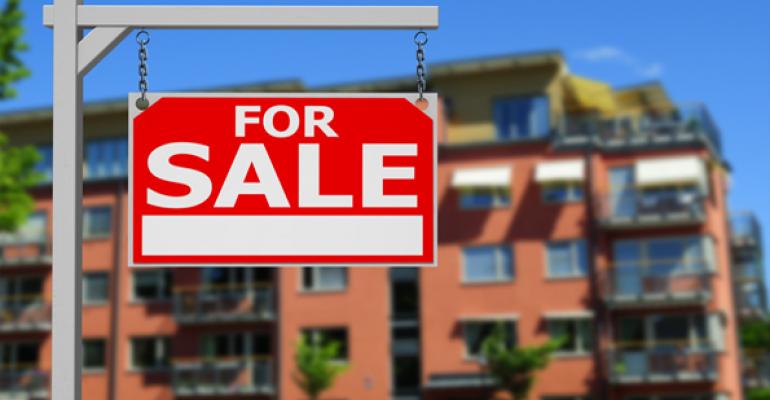Investors are still eager to buy apartment properties, but they just aren’t as eager to pay quite so much for them.
“Deal volume is pulling back as buyers and sellers are simply moving further apart on pricing expectations,” says Jim Costello, senior vice president with New York City-based research firm Real Capital Analytics (RCA).
The volume of deals that closed in May to buy and sell apartment properties shrank, after a strong start to the year. Apartment properties remain very desirable, especially in uncertain economic times, but some buyers are resisting the high prices sellers are asking for them. The volume of deals fell especially far in changing markets including Houston and San Francisco while investors turned to secondary markets where yields are higher.
The volume of properties that traded in April fell to just $5.6 billion—the lowest monthly volume in years, according to RCA. The slow month comes after a strong beginning to the year: investors traded $45.0 billion in apartment properties in the first four months of 2016, up from $42.7 billion during the same period last year.
At the same time, prices continue to rise for apartment properties, relative to the income they produce. Cap rates fell to an average of 5.8 percent in April, down from 6.0 percent the year before. Most of that decrease happened over the past few months.
“Surprising (to some) is that while deal volume has pulled back, pricing is still tight. Normally one might expect these to move together,” says Costello.
Apartment properties still manage to attract buyers because of the fundamental strength of the apartment markets, especially compared to other property types that have traded at decisively lower volumes so far in 2016.
“Demand continues to be relatively good for rental housing,” says Michael Cohen, director of advisory services for research firm CoStar Group. Large numbers of young people and retirees continue to move into rental apartments. Also, even if the economy slowed, apartments could still benefit. “Multifamily is a very defensive asset for people concerned about the medium term of the economy.”
Value-add strategy drives up prices for older properties
As more investors buy and renovate older apartment properties, the prices of older rental communities are getting closer to the prices of new apartment buildings. “The premium for new properties is decreasing,” says Ethan Vaisman, real estate economist at CoStar Portfolio Strategy. “The value-added play is driving the narrowing spreads.”
Investors now pay an average of $230,000 per unit to buy apartment properties that are less than 10 years old, compared to $138,000 per unit for older properties. That’s a 66 percent premium—a higher premium for new properties compared to 2005 or 2006, though it’s smaller than the premium than investors paid for new apartment properties in any other year since 2010, when buyers regularly paid 70 percent or more over the average price of older properties to buy new apartments.
Investors are also buying in secondary markets in large volumes. The volume of sales in Fort Lauderdale, Fla., for example, has doubled over the last year, according to CoStar. “People are scanning outward,” says Vaisman. “Capital is finding its way into overflow markets.”
Buyers wait and see in troubled markets
Buyers and sellers are not giving up on troubled markets, like Houston, where the local economy has unspooled with falling oil prices.
“There are lots of sharks in the water waiting to buy assets,” says Vaisman. Instead, the volume of sales of apartment properties has fallen sharply and buyers and sellers disagree on pricing.
Potential sellers believe that these markets will recover, and are refusing to sell at bargain prices.
“Everybody in Houston is holding on and waiting for things to come back.”
Buyers and sellers are also doing fewer deals in the San Francisco Bay Area, where the volume of sales of apartment assets has fallen as much as 20 percent in the last year, according to CoStar.
“The Bay Area has been the key example of things being on fire,” says Vaisman. Now the market is taking a pause.

